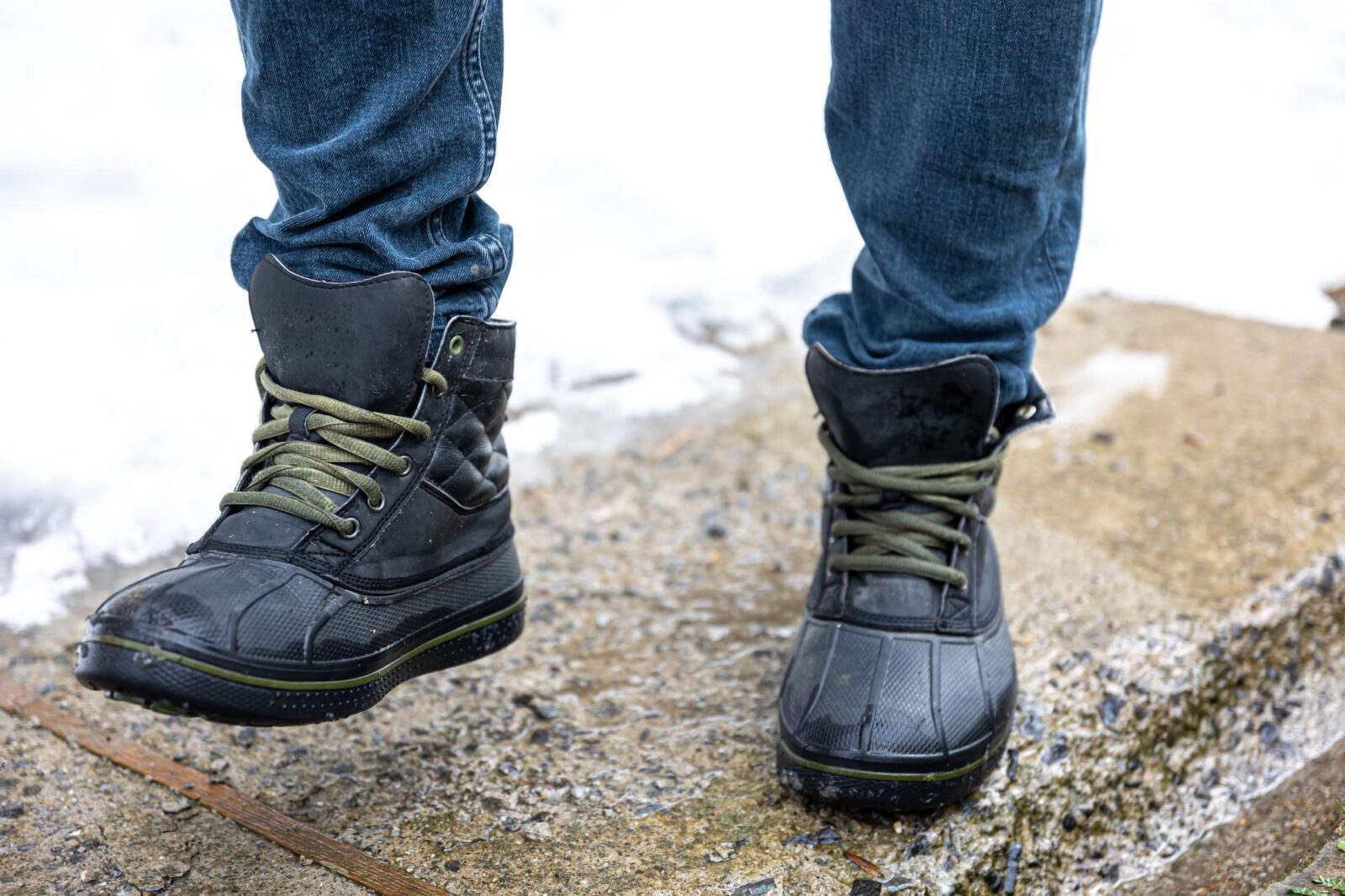
Essential PPE in the Food Industry: What You Need to Know
Overwhelmed by PPE options for food safety? Master your PPE selection for food workers safety with these practical tips.

Get 20€ off on your first order!
Choosing the right chemical-resistant boots ensures comfort, durability, and effective protection in any work environment. This article breaks down the key materials used, guiding you to find the perfect match for your needs. We provide clear, expert advice to help you make informed decisions, backed by industry insights.
Once you’ve selected the ideal boots, discover tips for care and maintenance and explore related protective gear to enhance your safety and convenience. This resource is your complete guide to confidence and preparedness at work.
For an overview of selecting chemical-resistant boots, visit our comprehensive buyer’s guide.
Nitrile is a synthetic rubber known for its excellent resistance to oils, fuels, and chemicals. It is widely used in industries such as automotive, pharmaceuticals, and food processing, where chemical exposure is common.
Nitrile-based boots are commonly used in laboratories and manufacturing industries. You can explore these options in our chemical-resistant boots category.
PVC boots are cost-effective and highly resistant to acids, bases, and organic solvents. These boots often feature reinforced soles to enhance slip resistance.
PVC is widely used in food processing and sanitation industries, where lightweight protection is crucial.
Polyurethane is a versatile material offering superior durability and resistance to both chemicals and abrasion. PU boots are commonly used in healthcare and laboratories for prolonged wear.
For a detailed look into polyurethane boots, refer to this guide.
Rubber offers exceptional chemical resistance and is ideal for heavy-duty environments. It’s often used in conjunction with other materials to enhance flexibility and durability.
Rubber boots are common in agriculture and chemical processing industries, where robust protection is essential.
Neoprene is a synthetic polymer known for its resistance to oils, solvents, and heat. It’s often used in boots for applications requiring flame resistance.
Choosing the right chemical-resistant boots depends on the specific chemical exposure scenarios in your workplace. Here’s a simple comparison to help:
| Material | Best For | Key Properties |
| Nitrile | Hydrocarbons, acids, alkalis | Flexible, durable |
| PVC | Acids, bases, organic solvents | Lightweight, affordable |
| Polyurethane | Alkalis, oils, abrasion-heavy settings | Durable, comfortable |
| Rubber | Acids, alcohols, heavy-duty environments | Robust, reliable |
| Neoprene | Oils, heat, and flame resistance | Heat and chemical resistant |
Proper care ensures your boots remain reliable and effective over time. Specific cleaning products designed for chemical-resistant materials, such as mild soap solutions or specialized cleaning sprays, can prevent degradation effectively.
To ensure your boots remain effective for longer periods:
Refer to our buyer’s guide for more care tips.
For complete safety, pair your chemical safety boots with related protective wear like lab coats, overalls, or disposable coats. These items are especially useful in situations where where chemical exposure conditions are more prevalent. For example, combining boots with overalls ensures protection for the entire body, Providing full coverage to safeguard against workplace chemical exposure.
Browse our curated selection of chemical-resistant boots in the product category. Each product is designed to meet European safety standards, ensuring you stay protected.
For more insights, check out sibling articles like How To Choose The Right Protective Overalls.
We hope this guide has been valuable in understanding the materials used in chemical-resistant boots, from their chemical compatibility to their suitability for various industries. Whether you’re working in healthcare, manufacturing, or agriculture, we’re committed to helping you find the perfect solution for your needs.
Explore our curated selection of chemical-resistant boots from trusted brands, each designed to provide exceptional protection and comfort.
Have questions or need advice? Reach out anytime—we’re here to ensure your safety, confidence, and satisfaction with every step you take.
– The Team
While some materials are versatile, always check the compatibility of your boots with specific chemicals to ensure proper protection.
Your boots should feel snug but not tight, with enough room to move your toes comfortably and no slipping at the heel.
Many boots include slip-resistant soles, but it’s best to confirm this feature for your specific work environment.
With proper care, most boots last 6-12 months, depending on the work environment and frequency of use.
Yes, but prolonged use outside their intended purpose may reduce their lifespan and effectiveness. Always clean and store them properly after use.
Thank you! You've signed up for our newsletter.



















Overwhelmed by PPE options for food safety? Master your PPE selection for food workers safety with these practical tips.

Struggling to maintain clear vision in demanding environments? This guide is here to help. By the end, you’ll know exactly...

Electricians across Europe face unique challenges that require reliable safety glasses to ensure both protection and efficiency. Whether safeguarding against...

Overwhelmed by PPE options for food safety? Master your PPE selection for food workers safety with these practical tips.

Struggling to maintain clear vision in demanding environments? This guide is here to help. By the end, you’ll know exactly...

Electricians across Europe face unique challenges that require reliable safety glasses to ensure both protection and efficiency. Whether safeguarding against...
Get 20€ off on your first order!
Save 30% by buying directly from brands, and get an extra 10€ off orders over €100
Save 30% by buying directly form brands, and get an extra 10€ off orders over €100